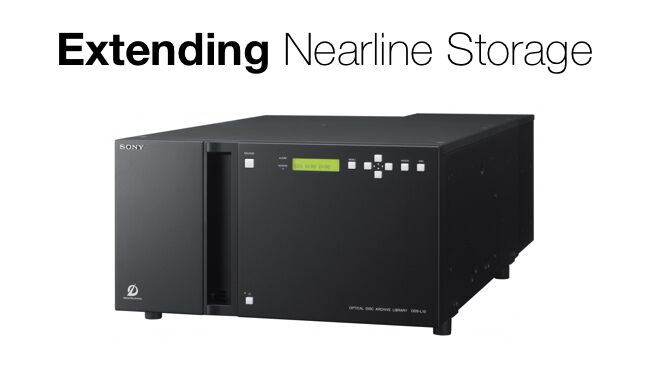
 Sony ODA helps you get to your material faster
Sony ODA helps you get to your material faster
New developments in storage are seeing the line between deep archive and nearline blurring, with some interesting repercussions for production.
With exciting cameras and fascinating post production techniques in the news all the time, news about storage doesn't always make the headlines. But storage is absolutely essential to modern production and there are some important developments that are going to blur some boundaries and make new workflows possible.
The best way to understand this is to consider what might be the ideal storage medium. It would be fast, cheap and highly scalable. It also goes without saying that it would last a very long time. And it should make your archived material easily — if not instantly — accessible.
Meanwhile, back in the real world, there have to be compromises. Hard drives are extremely quick but also very expensive per gigabyte. LTO (tape backup) is relatively cheap, quite fast, but hard to access quickly. Neither hard drives nor LTO (of a particular generation) are likely to be accessible in future decades. But there is one medium that ticks more boxes than most: it’s Sony’s Optical Disc Archive (ODA).
ODA is based on an existing and well-known format: Blu-ray, but it’s better than that. A second generation has just been released that is optimised for archive, with twice the native capacity. What’s also new is that discs are bundled into caddies and then, ultimately, into robotic retrieval systems. It’s a storage method that’s intrinsically scalable and the media are guaranteed by Sony to last at least five decades. But there’s another huge advantage. One that would be difficult to achieve with any other so-called deep archive system. First, some explanations.
Storage traditionally falls into three categories: online, nearline and offline. Online storage is hard drives and solid state storage (apart from RAM). It’s very fast, with virtually instantaneous access. Near-line is half way between online and offline. It means that stored material is automatically retrieved for use, normally without human intervention, and usually that the storage medium is cheaper than spinning hard drives.
ODA is fast enough to play professional media in realtime. You can take an individual Optical Archive disc, connect it to an NLE and play media direct from the drive. But that’s just one disc. ODA is completely scalable, but that doesn’t mean that a person has to retrieve discs from a distant shelf, because part of the ODA ecosystem is that it is automated. Caddies containing multiple discs are retrieved quickly by robotic mechanisms, ready to play video with just a short delay.
One of Sony’s Partners, Storage DNA, has embraced this capability and written its software to allow discs to be selected rapidly enough that retrieving material from ODA deep storage can become part of a realtime workflow. They call this “Extended Nearline”, because in effect it is blurring the distinction between deep archive and nearline. With only a minimal delay, editors can select clips from ODA and play it on their timelines. This just isn’t possible with tape media.
This is an important point: when you come to choose a storage medium, don’t just compare prices. Look at the way you want to work. Look at how important it is for you to be able to retrieve your archived material quickly. If this is crucial to your workflow, then have a close look at ODA.
Finally, Sony is showing its storage solutions - and much more, of course - at IBC this week in Hall 13, Stand 13.A10. More information here.
And, if you’re not heading to Amsterdam this year, you can get more information about ODA by clicking here.
Tags: Post & VFX


Comments